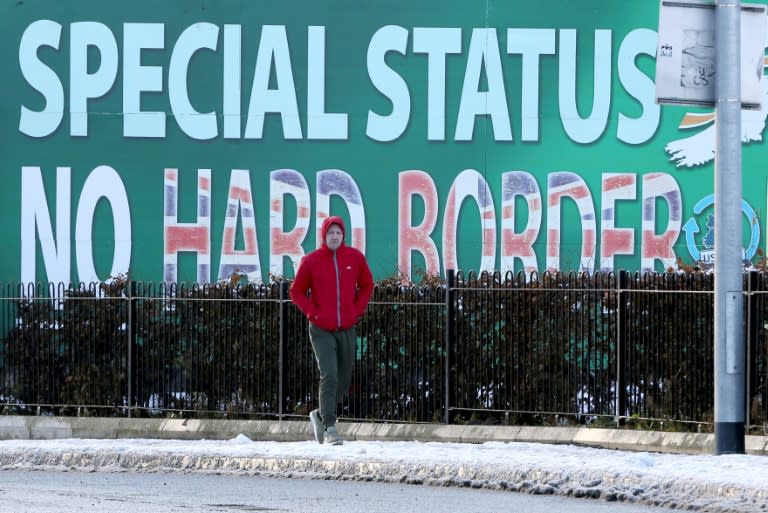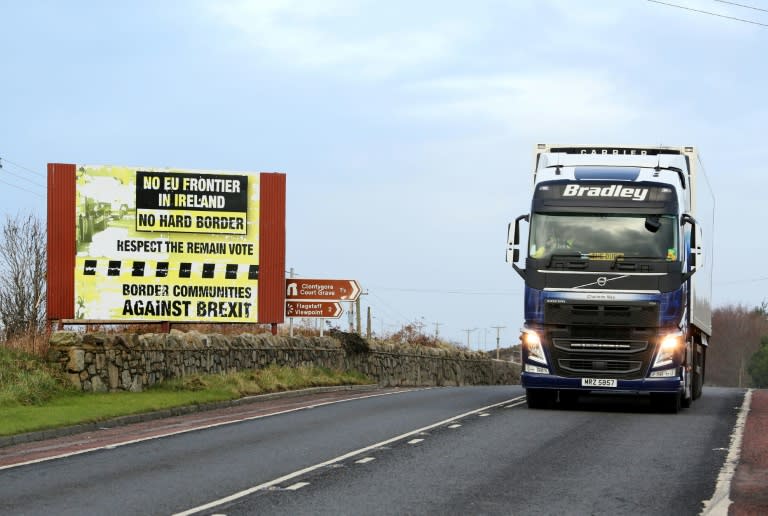Irish border issue haunts Brexit negotiations
The fate of the Irish border after Brexit once again drove a wedge between the EU and Britain on Wednesday, the latest row over the fiendishly complex problem. The latest disagreement flared when EU chief negotiator Michel Barnier unveiled a draft divorce treaty, which put into legal terms proposals agreed with Britain in December. Both sides have vowed they will not impose a "hard" border between EU-member Ireland and British-ruled Northern Ireland, but nearly a year since formal exit proceedings began, no agreement has been reached on how to manage Britain's only land frontier with the EU. The text unveiled by Barnier includes a "backstop solution", under which Northern Ireland would remain in "full alignment" with Ireland, which is a member of the bloc's single market and customs union. British Prime Minister Theresa May rejected the idea, saying it would "undermine the UK common market and threaten constitutional integrity of the UK by creating a customs and regulatory border down the Irish Sea and no UK prime minister could ever agree to it". Ireland has succeeded in making the border issue one of the EU's top priorities for Brexit negotiations, aiming to preserve the values of the 1998 Good Friday Agreement which ended decades of conflict in Northern Ireland that claimed 3,500 lives. The Good Friday deal saw checkpoints dismantled and the border is currently open, ensuring the free movement of goods and people, with some 30,000 crossing it every day. Locals fear that the reimposition of some kind of checks could hamper the economy and undermine the peace accords. - 'Political Game of Thrones' - Britain hopes to find a technological solution that would maintain the free flow of traffic while allowing for a divergence in customs rules, but time is short with Britain set to be fully out of the EU by the end of 2020. "I think we are working against the clock so I think it would be difficult for those technologies to be developed by the end of the transition period," said Magdalena Frennhoff Larsen, lecturer at the University of Westminster. There is furthermore no precedent to follow for only part of a country being in the customs union. May is due to outline her latest Brexit plans in a speech on Friday. She has to find a way to honour her promise that the border will remain open with the apparently contradictory pledge that Britain will be able to strike its own post-Brexit trade deals, ruling out a customs union with the EU. May leads a minority government, which is under threat if she reneges on promises to either pro-Brexit or pro-EU factions within her Conservative Party. Irish Foreign Minister Simon Coveney further piled the pressure on May, demanding to know how she would avoid the "backstop" plan. "This is very much a default and would only apply should it prove necessary. This is about delivering on our shared objectives of protecting the Good Friday Agreement and the gains of the peace process, no less, no more," he said in Dublin. Britain's former prime minister, John Major, said the UK needed to "urgently" come up with a solution. "It is our British responsibility to find one -- we created the problem, not the European Union," he said in London. To make issues even more complicated, May has to take into account the views of the DUP, the pro-British Northern Ireland party that props up her government. The DUP has said it will not accept a hard border or any post-Brexit divergences between Northern Ireland and the rest of the United Kingdom. Paul Breen, a lecturer at the University of Westminster, said May was involved "a political 'Game of Thrones'". "The way it's going at the minute it does look as if we are going to get a ridiculous situation where we are going to come up practically to the time of withdrawal and there just won't be a solution. And it will be a disaster," he said.



